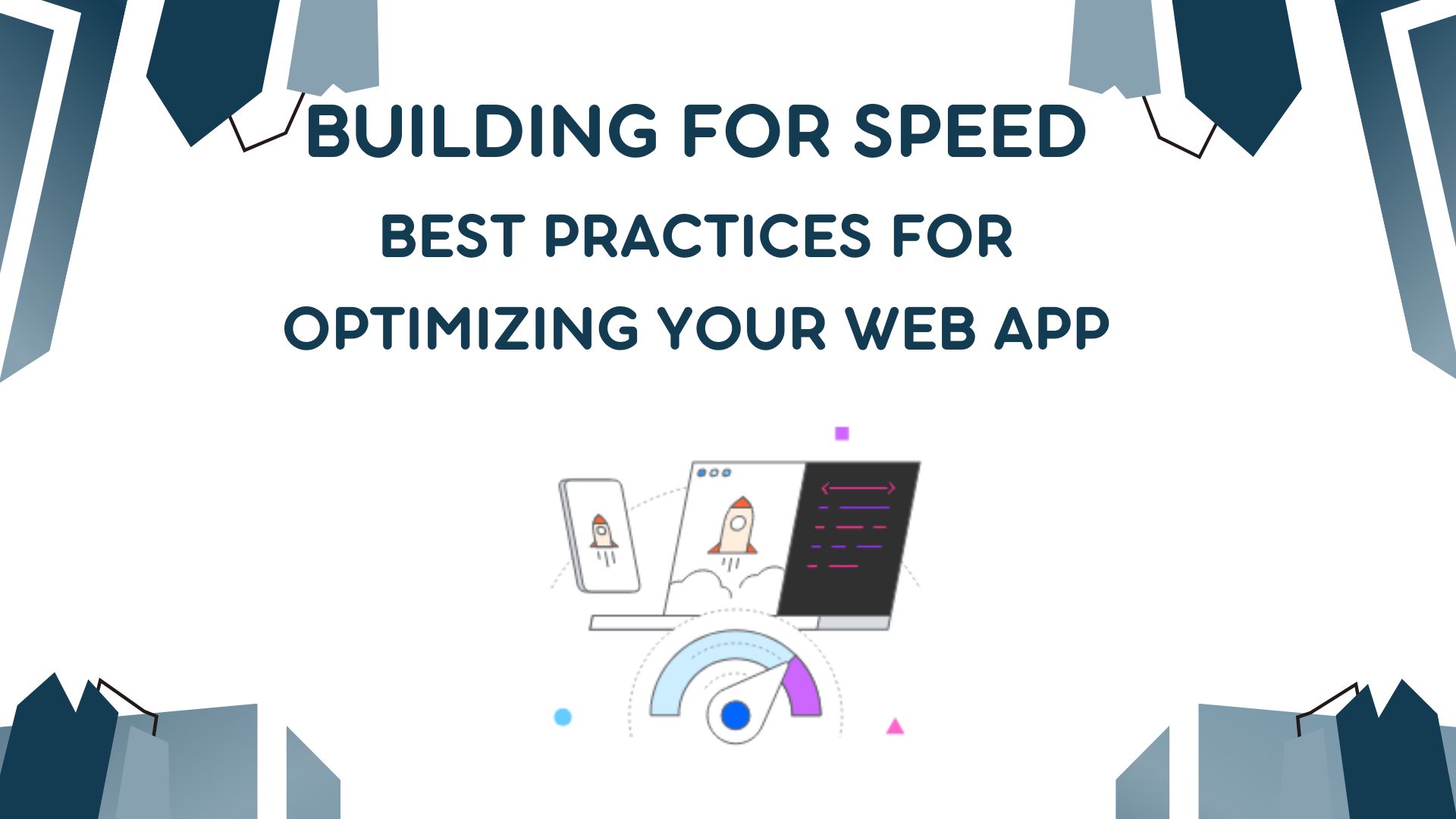Building for Speed: Best Practices for Optimizing Your Web App
In today’s fast-paced digital world, performance is a critical factor in user experience, SEO rankings, and conversion rates. A slow-loading web app can frustrate users, increase bounce rates, and hurt your business.
The good news? There are proven optimization techniques to make your web app blazing fast. From lazy loading and caching strategies to reducing JavaScript bloat, this guide covers practical, actionable tips to speed up your web app in all scenarios.
1. Optimize Asset Delivery
Use Efficient Image Formats
- Convert images to WebP (25-35% smaller than JPEG/PNG).
- Use responsive images with
<picture>andsrcset. - Compress images with tools like Squoosh, TinyPNG, or ImageOptim.
Lazy Load Non-Critical Resources
- Defer offscreen images & iframes with
loading="lazy":1 2
<img src="image.jpg" loading="lazy" alt="..."> <iframe src="video.html" loading="lazy"></iframe>
- Use Intersection Observer API for dynamic content.
Serve Modern Code (ES6+) with Fallbacks
- Use module/nomodule pattern for differential loading:
1 2
<script type="module" src="modern.js"></script> <script nomodule src="legacy.js"></script>
- Transpile only what’s needed (avoid polyfilling for modern browsers).
2. Reduce JavaScript Bloat
Code Splitting & Dynamic Imports
- Split bundles by route (React:
React.lazy, Vue:defineAsyncComponent). - Load non-critical JS on demand:
1
import('./module.js').then(module => module.init());
Tree Shaking & Dead Code Elimination
- Use ES6 modules (
import/export) for better static analysis. - Enable Webpack/Rollup’s tree-shaking (remove unused exports).
Minimize Third-Party Scripts
- Audit dependencies with:
1
npx source-map-explorer bundle.js
- Load non-essential scripts (analytics, ads) after page load.
3. Leverage Caching Strategies
HTTP Caching (Cache-Control Headers)
- Cache static assets aggressively:
1 2 3 4
location ~* \.(js|css|png|jpg|jpeg|gif|ico)$ { expires 1y; add_header Cache-Control "public, immutable"; }
- Use versioned filenames (
main.abcd1234.js) for cache busting.
Service Workers for Offline Support
- Cache critical assets with Workbox:
1 2
import {precacheAndRoute} from 'workbox-precaching'; precacheAndRoute(self.__WB_MANIFEST);
CDN for Global Performance
- Serve assets from edge locations (Cloudflare, AWS CloudFront, Fastly).
4. Optimize Rendering Performance
Reduce Critical Rendering Path
- Inline critical CSS & defer non-critical styles:
1
<link rel="stylesheet" href="non-critical.css" media="print" onload="this.media='all'">
- Minimize render-blocking JavaScript (
async,defer).
Optimize CSS & Avoid Layout Thrashing
- Use CSS containment (
contain: layout paint;) for isolated components. - Avoid forced synchronous layouts (batch DOM reads/writes).
Virtualize Long Lists
- Use React Window, Vue Virtual Scroller for large datasets.
5. Network & Server-Side Optimizations
Enable Compression (Brotli > Gzip)
- Configure Brotli on your server:
1 2 3
brotli on; brotli_comp_level 6; brotli_types text/html text/css application/javascript;
HTTP/2 & HTTP/3 (QUIC)
- Multiplexing reduces latency (no more domain sharding needed).
- Server push preloads critical assets.
Reduce TTFB (Time to First Byte)
- Optimize backend queries (database indexing, caching).
- Use edge functions (Cloudflare Workers, Vercel Edge Functions).
6. Monitor & Continuously Improve
Measure Performance Metrics
- Core Web Vitals (LCP, FID, CLS) via Google Lighthouse.
- Real User Monitoring (RUM) with CrUX, New Relic, Sentry.
A/B Test Optimizations
- Compare before/after using WebPageTest, GTmetrix.
Adopt a Performance Budget
- Example budget:
1 2 3 4 5 6
{ "js": "150kb", "css": "50kb", "images": "1mb", "fonts": "100kb" }
Final Thoughts
Optimizing web app speed is not a one-time task—it’s an ongoing process. By reducing JavaScript bloat, leveraging caching, lazy loading assets, and optimizing server responses, you can dramatically improve load times and user experience.
Start small, measure impact, and iterate. Your users (and search rankings) will thank you!
